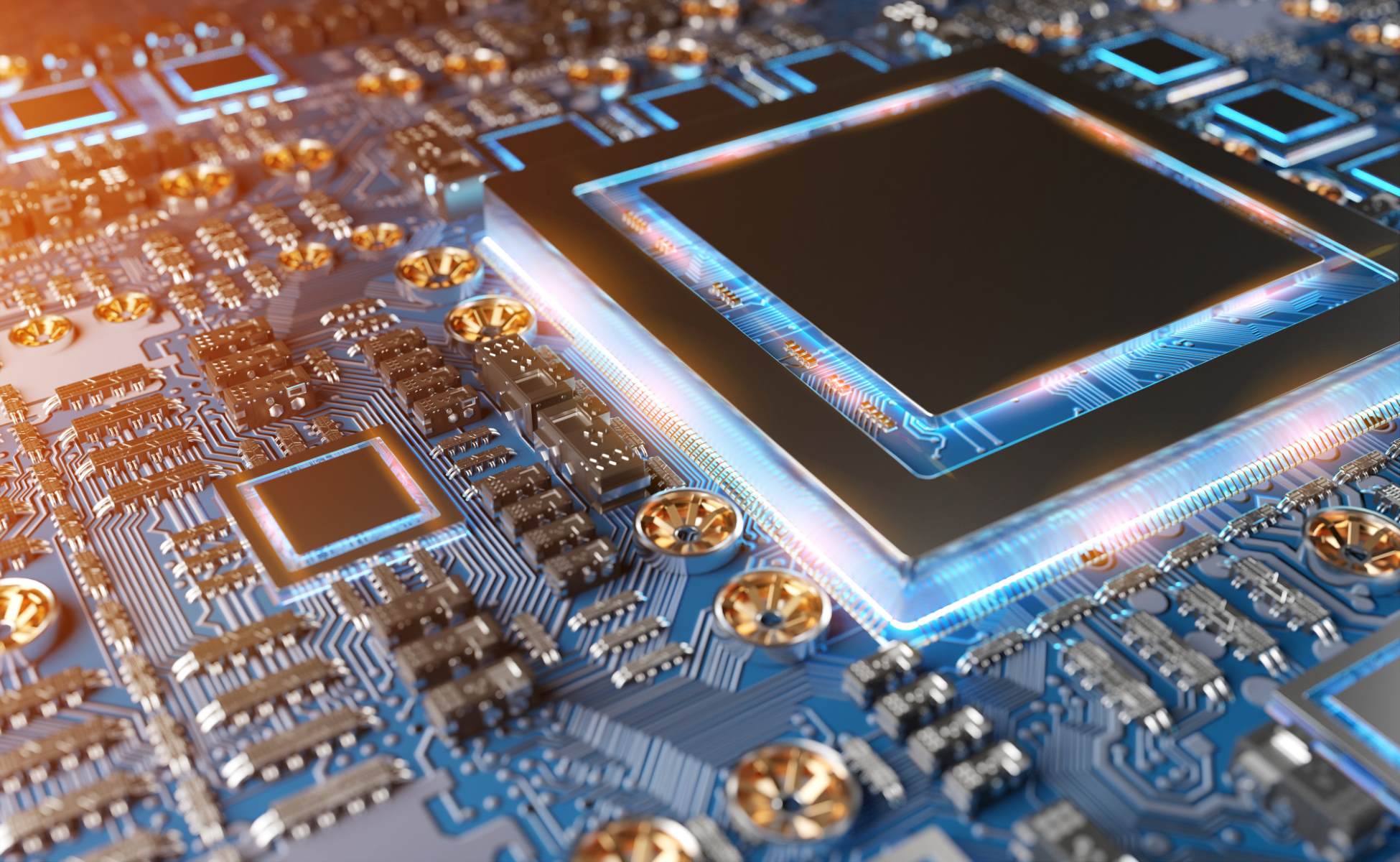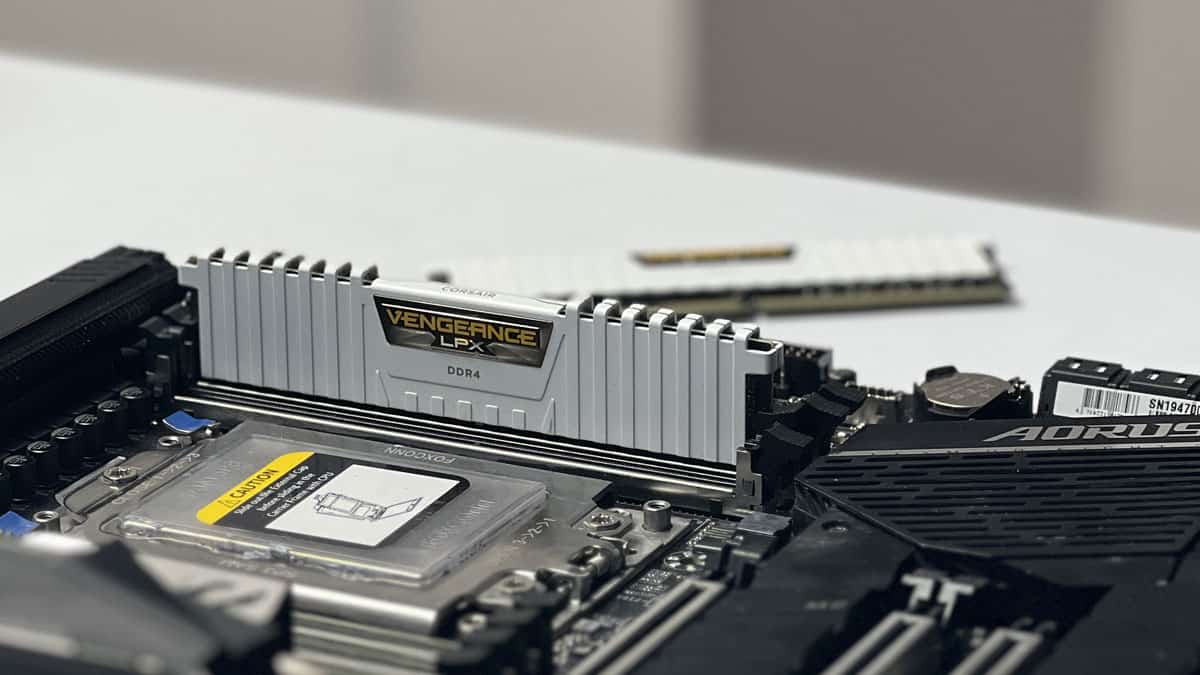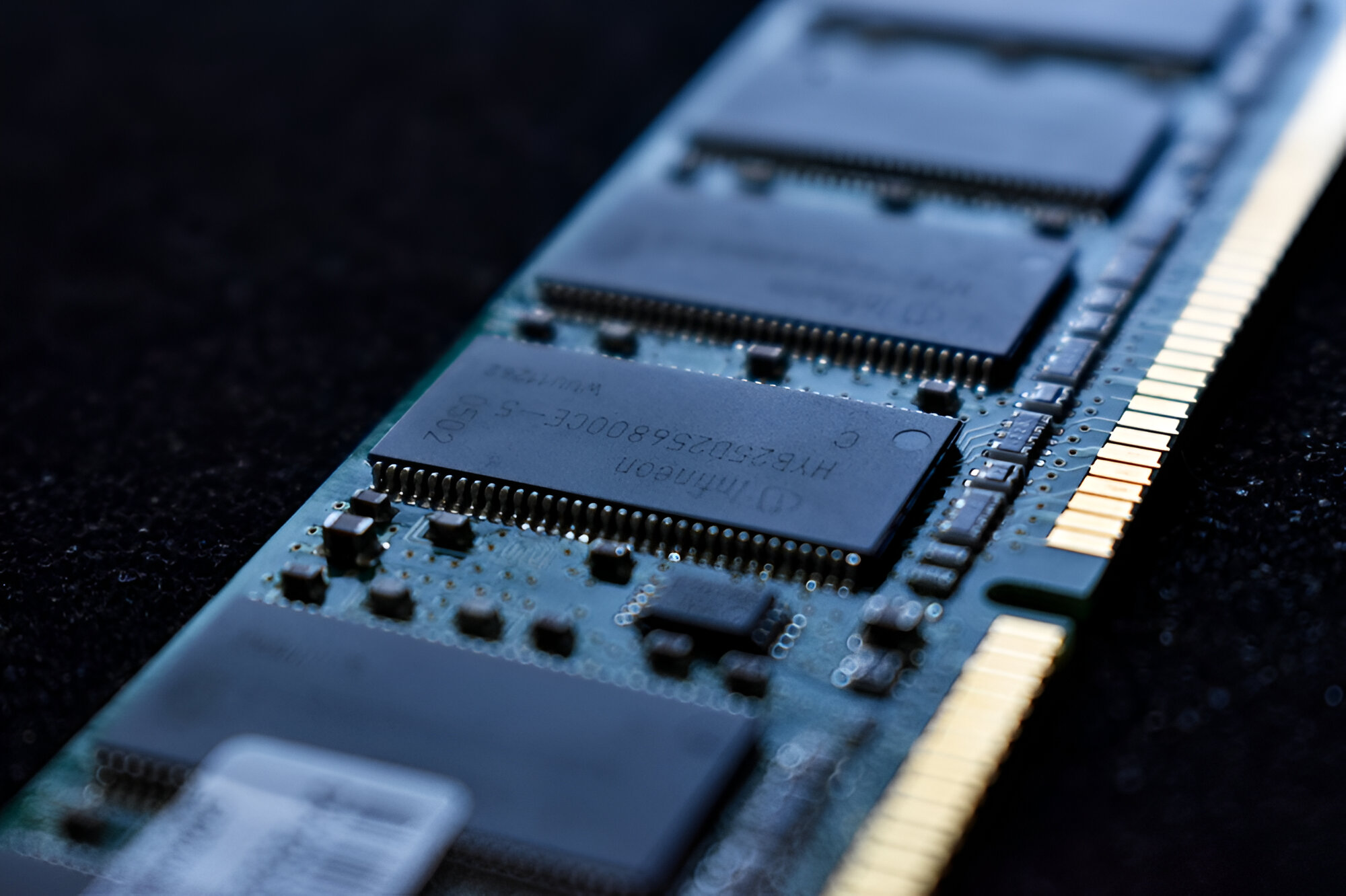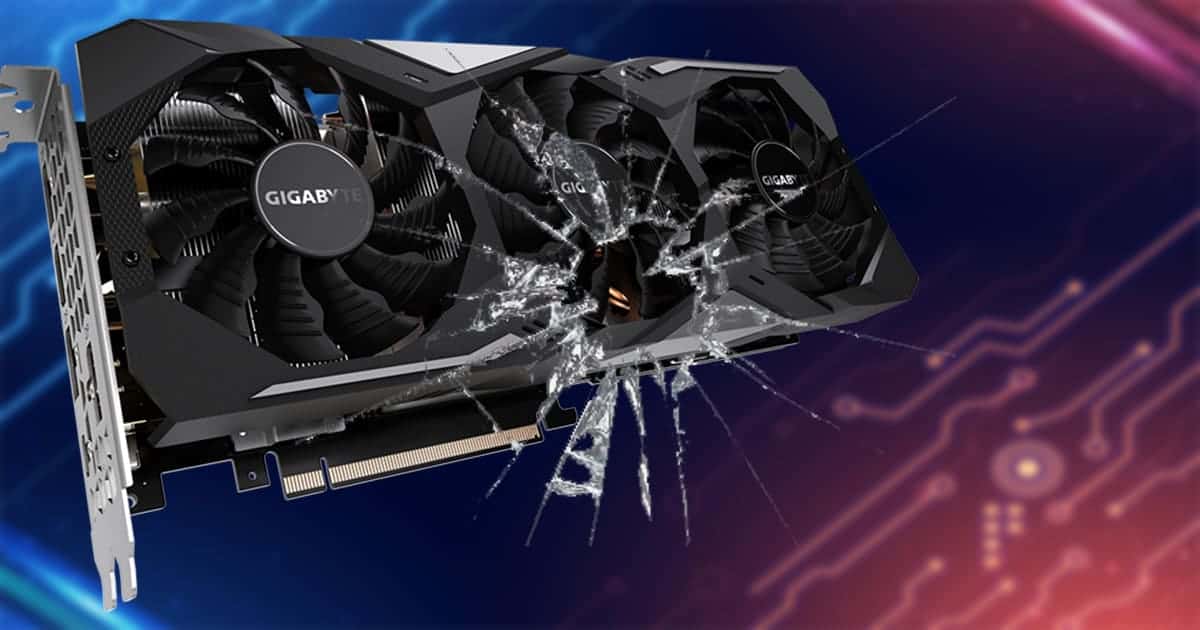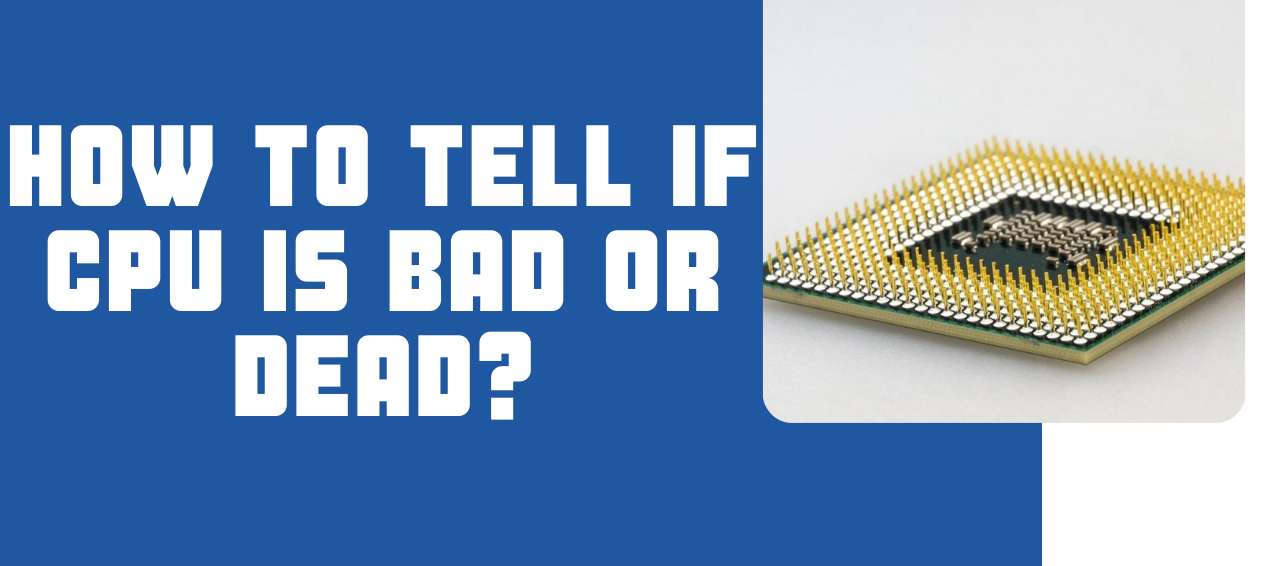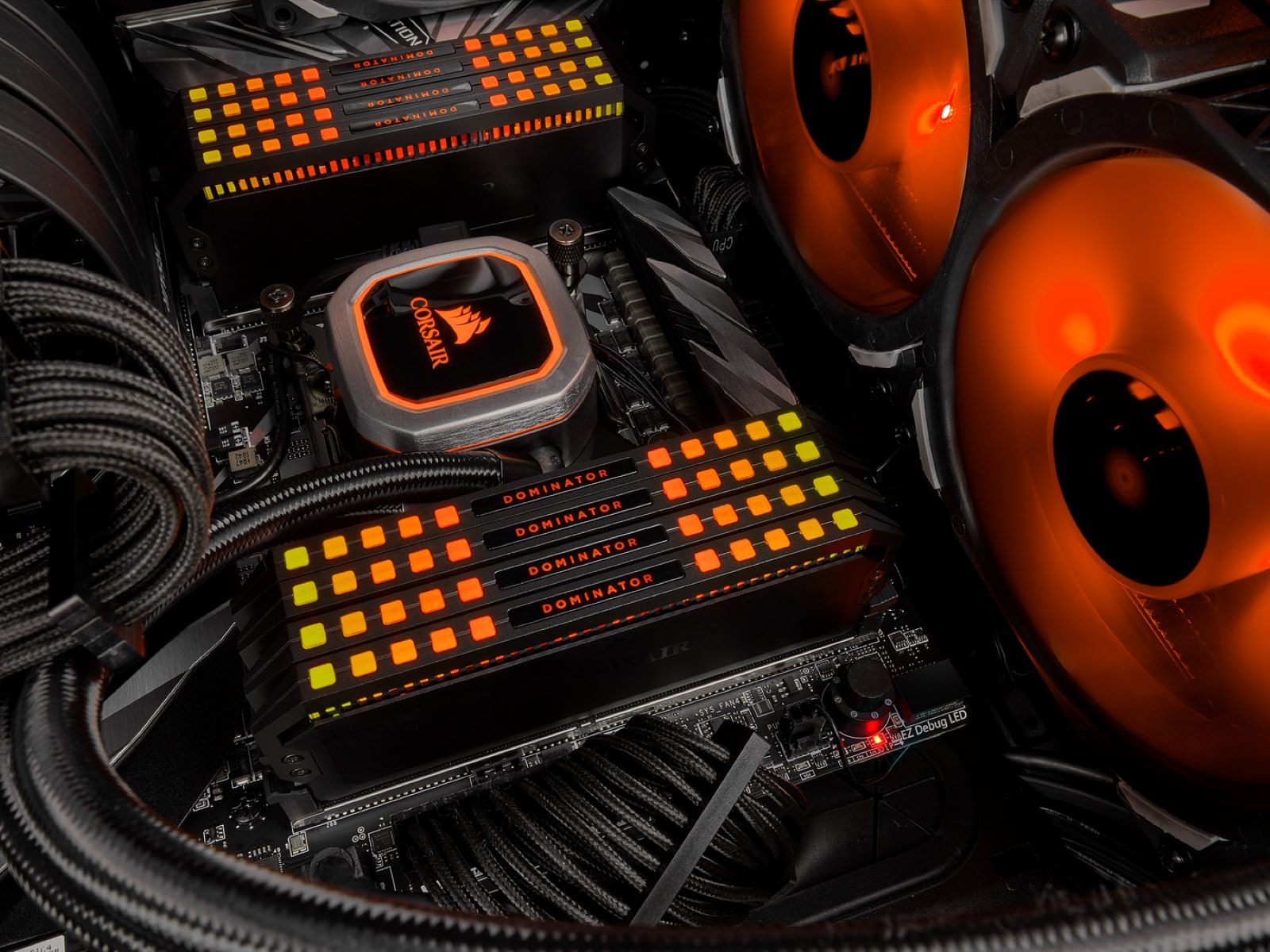Introduction
Random Access Memory, or RAM, is a crucial component of your computer’s hardware. It serves as the short-term memory that stores and accesses data that is actively being used by the computer’s processor. A malfunctioning or bad RAM can lead to a variety of computer problems and can significantly impact the performance and stability of your system.
Identifying whether your RAM is faulty can be a challenging task, as the symptoms may not always be obvious. However, there are indicators that can help you determine if your RAM is causing issues. This article will explore the common signs of bad RAM and provide guidance on how to test and troubleshoot it.
Understanding the signs of bad RAM is beneficial, as it allows you to take appropriate action to resolve the problem. Whether you are experiencing frequent system crashes, slow performance, or unexplained errors, knowing how to identify bad RAM can save you time and frustration.
This article will walk you through the common symptoms of bad RAM, provide instructions on how to test your RAM using various tools, and offer suggestions on what to do if your RAM is indeed faulty. By the end of this article, you will have a better understanding of how to recognize and address bad RAM issues.
Signs of Bad RAM
When your RAM is failing or beginning to go bad, your computer may exhibit several noticeable signs. It’s important to be aware of these symptoms to diagnose the issue correctly. Here are some common indicators that your RAM might be the culprit:
- Frequent system crashes: If your computer frequently crashes and displays the infamous Blue Screen of Death (BSOD), this could be a sign of faulty RAM. Sudden system reboots or freezes during normal operations can also indicate RAM issues.
- Unexpected restarts: Your computer may restart unexpectedly without any apparent reason. If this happens consistently, it might be due to bad RAM.
- Software crashes: Intermittent crashes and error messages while running software applications can also point to RAM problems. If you encounter frequent crashes or applications freezing, suspecting your RAM is a reasonable assumption.
- Slow performance: RAM plays a significant role in a computer’s performance. If your system is experiencing sluggishness, delays, or a noticeable decrease in speed while undertaking routine tasks, it could indicate bad RAM.
- File errors: Corrupted or missing files can be a result of faulty RAM. If you encounter unusual error messages related to file corruption or data loss, it’s worth considering RAM as a potential cause.
- Booting issues: Problems during the booting process, such as extended boot times, repeated boot loops, or the inability to boot at all, can be attributed to bad RAM.
- Random system restarts: Your computer may restart randomly without any warning or prompt. If this occurs, it may indicate faulty RAM.
- Strange graphical glitches: If you notice unusual graphical artifacts, screen flickering, or distorted visuals, it could be a result of malfunctioning RAM that affects the display output.
- Memtest errors: When performing diagnostic tests on your RAM (which we will discuss later), encountering errors during the memory test is a clear indication of bad RAM.
While these signs can point to RAM problems, it is essential to conduct proper testing to confirm whether your RAM is indeed faulty. In the following sections, we will explore different methods to test your RAM and accurately diagnose any potential issues.
Common Symptoms
When your RAM starts to fail, it can manifest in various symptoms that can disrupt the normal functioning of your computer. Here are some of the most common symptoms of bad RAM:
- Frequent system crashes and freezes: One of the most noticeable signs of bad RAM is frequent crashes and system freezes. Your computer may suddenly restart or encounter a blue screen error (BSOD). If you often experience these issues, it’s worth investigating the RAM as a potential source of the problem.
- Slow performance: RAM plays a crucial role in the overall speed and responsiveness of your computer. When your RAM is faulty, you may notice a significant decrease in performance. Programs and applications may take longer to load, and general tasks may become slower.
- Unexpected reboots: If your computer restarts unexpectedly without any apparent reason, it could be a sign of bad RAM. This can happen during regular usage or even when the system is idle.
- Application crashes: Faulty RAM can lead to frequent crashes of software applications. You may experience sudden app closures or error messages indicating a memory-related issue. If you notice this happening consistently, it’s worth investigating the RAM as a potential cause.
- Files becoming corrupted: RAM is responsible for storing and retrieving data. When it is faulty, it can lead to data corruption. You may encounter files that are suddenly corrupted or become inaccessible. This can affect documents, photos, and other types of files.
- System hangs and unresponsive behavior: Sometimes, a faulty RAM module can cause your computer to become unresponsive or freeze. You may find that your mouse and keyboard inputs are not registering, and you are unable to perform any operations. Restarting the system may temporarily resolve the issue.
- Windows memory errors: If you run a memory diagnostic tool like Windows Memory Diagnostic or MemTest86, and it reports errors related to memory, it is a clear indication of bad RAM. These tools are specifically designed to pinpoint memory issues and can help validate whether RAM is causing your computer problems.
It’s important to note that these symptoms can also be caused by other hardware or software issues. Therefore, it’s recommended to perform proper testing to confirm whether your RAM is the root cause.
How to Test RAM
Testing your RAM is an essential step in diagnosing whether it is causing issues with your computer. Fortunately, there are several tools available to help you perform comprehensive tests to identify any potential problems. Here are some methods you can use to test your RAM:
- Windows Memory Diagnostic: Windows users can utilize the built-in Windows Memory Diagnostic tool. To access it, simply type “Windows Memory Diagnostic” in the Start menu or search bar. The tool will guide you through the process of testing your RAM for errors.
- MemTest86: MemTest86 is a popular and reliable third-party RAM testing tool. It is available for free and can be run from a bootable USB drive or CD/DVD. MemTest86 thoroughly tests your RAM, providing detailed reports on any errors or issues found.
- MemTest86+: Similar to MemTest86, MemTest86+ is another widely used RAM testing utility. It can be run independently from a bootable USB drive, CD/DVD, or even directly from your operating system. MemTest86+ conducts comprehensive tests on your RAM and provides detailed feedback on any problems.
- MemTest: MemTest is another excellent option for testing RAM. It is a lightweight command-line utility used to diagnose RAM-related issues. MemTest is easy to use and can be run from a bootable USB drive.
When testing your RAM, it’s important to follow the instructions provided by the tool you choose. Most tools will allow you to perform a complete scan of your RAM, checking each memory module individually. The testing process may take some time, especially if you have a large amount of RAM installed.
During the testing, the tool will check for errors and report any problems it detects. If errors are found, it usually indicates that the affected RAM module is faulty. In such cases, it is advisable to replace the faulty RAM module to restore the stability and performance of your computer.
Remember, if you are not comfortable performing these tests yourself, you can always seek the assistance of a professional technician who can help diagnose and resolve any RAM issues.
Testing with Windows Memory Diagnostic
Windows users have the advantage of a built-in tool called Windows Memory Diagnostic, which can help identify any potential issues with your RAM. Here’s how you can use Windows Memory Diagnostic to test your RAM:
- Open the Start menu and type “Windows Memory Diagnostic” in the search bar.
- Select the Windows Memory Diagnostic tool from the search results. You may need to provide administrator privileges to run the tool.
- In the tool’s interface, you will have two options: “Restart now and check for problems (recommended)” or “Check for problems the next time I start my computer.” Choose the option that suits your preference.
- If you select the first option, your system will restart, and the Windows Memory Diagnostic tool will run its test during the booting process. You will see a blue screen with the progress of the scan.
- If you choose the second option, the tool will perform the test on the next system startup.
- During the test, Windows Memory Diagnostic will check your RAM for errors. It will perform a series of read and write tests to identify any potential issues.
- Once the test is complete, your computer will restart again.
- After the restart, Windows will provide you with the test results. If any errors are detected, make a note of the error message or code provided by the tool.
If the Windows Memory Diagnostic tool detects errors in your RAM, it’s a strong indication that your RAM is faulty and needs to be replaced. However, keep in mind that false positives can occur, so it is recommended to perform further tests to confirm the findings.
Using the Windows Memory Diagnostic tool is a straightforward and convenient way to check the health of your RAM. If it reports errors, it’s crucial to take action and replace the faulty RAM module to ensure the stability and proper functioning of your computer.
Testing with MemTest86
MemTest86 is a widely trusted third-party tool for testing and diagnosing RAM issues. Using MemTest86 can help you perform a comprehensive and detailed examination of your RAM. Here is how you can test your RAM using MemTest86:
- Download MemTest86 from its official website and create a bootable USB drive or CD/DVD with the MemTest86 ISO file. Instructions for creating a bootable drive or disc are available on the MemTest86 website.
- Insert the bootable USB drive or CD/DVD into the computer with the RAM you want to test.
- Restart your computer and enter the BIOS settings by pressing the appropriate key (usually displayed during the boot process).
- In the BIOS settings, navigate to the Boot options and set the priority to boot from the USB drive or CD/DVD that contains MemTest86.
- Save the changes in the BIOS and exit.
- Your computer will boot from the MemTest86 USB drive or CD/DVD. The MemTest86 tool will automatically start running and perform a series of extensive tests on your RAM.
- Allow MemTest86 to complete its testing process. This can take some time, depending on the size of your RAM and the number of passes you want to perform.
- As MemTest86 runs, it will display detailed information about the tests being conducted and any errors or issues detected. Make note of any error messages or codes displayed.
- If errors are found, they are indicative of faulty RAM. In this case, you should replace the faulty RAM module to resolve the issues.
- Once the testing is complete and you have noted any errors, you can restart your computer and remove the MemTest86 USB drive or CD/DVD.
MemTest86 is a powerful tool that can provide accurate results when it comes to testing your RAM. Its thorough analysis helps identify any problematic RAM modules, allowing you to take the necessary steps towards resolving the issues.
Remember, it is essential to test each RAM module individually to pinpoint the specific module causing problems. This way, you can avoid the need to replace all the RAM if only one module is faulty.
Testing with MemTest86+
MemTest86+ is another reliable tool for testing the health and stability of your RAM. With its advanced testing capabilities, MemTest86+ can help you detect any potential issues with your RAM modules. Here’s how you can test your RAM using MemTest86+:
- Download MemTest86+ from its official website and create a bootable USB drive or CD/DVD with the MemTest86+ ISO file. Instructions for creating a bootable drive or disc are available on the MemTest86+ website.
- Insert the bootable USB drive or CD/DVD into the computer containing the RAM you want to test.
- Restart your computer and enter the BIOS settings by pressing the appropriate key (usually displayed during the boot process).
- In the BIOS settings, navigate to the Boot options and set the priority to boot from the USB drive or CD/DVD that contains MemTest86+.
- Save the changes in the BIOS and exit.
- Your computer will boot from the MemTest86+ USB drive or CD/DVD. The MemTest86+ tool will automatically start running and initiate a series of comprehensive tests on your RAM.
- Allow MemTest86+ to complete its testing process. It will continuously perform multiple passes, checking your RAM for any errors or issues.
- During the testing, MemTest86+ will display detailed information about the tests being conducted and any errors encountered. Make note of any error messages or codes displayed.
- If any errors are detected, it confirms that there are faulty RAM modules. In such cases, it is recommended to replace the problematic RAM module(s) to resolve the issues effectively.
- Once the testing is complete and you have documented any errors, you can restart your computer and remove the MemTest86+ USB drive or CD/DVD.
MemTest86+ provides a comprehensive and in-depth analysis of your RAM’s performance, enabling you to identify any malfunctioning modules accurately. By replacing the faulty RAM, you can restore the stability and optimal functioning of your computer.
Remember, it’s crucial to test each RAM module individually to isolate the specific module(s) causing problems. This approach helps prevent unnecessary replacement of all RAM if only one module is faulty.
Testing with MemTest
MemTest is a lightweight command-line utility that provides a simple yet effective way to test your RAM for any potential issues. Here’s how you can use MemTest to test your RAM:
- Download MemTest from a trusted source and save the executable file to your computer.
- Create a bootable USB drive or CD/DVD with the MemTest executable file. There are several tools available online that can assist you in creating a bootable drive or disc.
- Insert the bootable USB drive or CD/DVD into the computer with the RAM you want to test.
- Restart your computer and enter the BIOS settings by pressing the appropriate key during the boot process.
- In the BIOS settings, adjust the boot priority to start from the USB drive or CD/DVD that contains MemTest.
- Save the changes in the BIOS and exit.
- Your computer will boot from the MemTest USB drive or CD/DVD, and the MemTest utility will launch automatically.
- MemTest will start running a series of tests on your RAM, checking for errors and inconsistencies.
- Allow MemTest to complete its testing process. The utility will display detailed information about the tests being performed and report any errors or issues detected.
- If any errors are found, it indicates faulty RAM modules. You should consider replacing the problematic RAM module(s) to resolve the issues.
- Once the testing is complete, you can restart your computer and remove the MemTest USB drive or CD/DVD.
Although MemTest may lack a graphical user interface, it’s a powerful tool for identifying potential RAM problems. Its simplicity and efficiency make it a popular choice among experienced users and technicians.
Remember, it’s important to test each RAM module individually to pinpoint the specific module(s) causing issues. This allows you to replace only the faulty RAM module(s) instead of unnecessarily replacing all of your RAM.
What to Do If RAM Is Bad
If you have determined that your RAM is indeed bad or faulty, you will need to take the appropriate steps to address the issue. Here are some actions you can take if your RAM is found to be bad:
- Replace the faulty RAM: The most effective solution is to replace the faulty RAM module. Identify the specific module(s) causing the problem, remove it from the computer, and purchase a compatible replacement. Make sure to check the RAM specifications and compatibility with your motherboard before purchasing.
- Consult a professional: If you are uncertain about replacing the RAM yourself or need assistance in troubleshooting the issue, it’s recommended to consult a professional technician. They can accurately diagnose the faulty RAM, provide guidance on replacement, and ensure the smooth functioning of your computer.
- Upgrade your RAM: If you have been experiencing issues with your existing RAM, it might be an opportunity to consider upgrading your RAM altogether. Assess your system’s requirements and consider installing higher-capacity or faster RAM modules to improve overall performance.
- Backup your data: Before making any changes to your computer’s hardware, it’s essential to back up your data. This precaution ensures that your important files and documents are protected in case of any accidental data loss or system instability during the RAM replacement process.
- Install the new RAM: Once you have obtained the replacement RAM module(s), carefully install them into the appropriate slots on your motherboard. Follow the manufacturer’s instructions and ensure a secure fit. Double-check that the RAM is properly seated before closing the computer case and connecting all cables.
- Test the new RAM: After installing the new RAM, it is advisable to run the same diagnostic tests mentioned earlier to verify its functionality. Use tools like Windows Memory Diagnostic, MemTest86, or MemTest86+ to ensure that the new RAM is working properly without any errors.
- Monitor system stability: Once the new RAM is installed, keep an eye on your system’s performance and stability. Check for any recurring issues like crashes, freezes, or slowdowns. If the problems persist, it could indicate other underlying hardware or software issues that require further investigation.
By taking these necessary steps, you can effectively address the issue of bad RAM and restore the optimal functioning and performance of your computer. Remember to handle the replacement process with care and seek professional assistance if needed to ensure correct installation and functionality of the new RAM modules.
Conclusion
Bad RAM can lead to significant disruptions in your computer’s performance, causing crashes, freezes, and other issues. It’s crucial to be aware of the signs and symptoms of bad RAM to promptly diagnose and resolve the problem. By understanding the common signs of bad RAM and following the appropriate testing methods, you can accurately identify faulty RAM modules and take the necessary steps to rectify the issue.
Throughout this article, we discussed the signs of bad RAM, including frequent system crashes, unexpected restarts, slow performance, and file errors. We also explored different methods for testing your RAM, such as using tools like Windows Memory Diagnostic, MemTest86, MemTest86+, and MemTest. These testing tools can help pinpoint the problematic RAM module(s) and validate whether your RAM is, indeed, the source of the problem.
If your RAM is found to be defective, it is recommended to replace the faulty module(s) with compatible replacements. You can consider seeking the assistance of a professional technician if you are unsure about the replacement process or need further troubleshooting help. Additionally, you may want to take this opportunity to upgrade your RAM, considering higher-capacity or faster modules that can enhance your computer’s overall performance.
Remember, when handling your computer’s hardware, follow proper safety precautions, back up your data, and ensure that the RAM is installed correctly. After replacing or upgrading your RAM, it’s recommended to test the newly installed RAM modules to verify their functionality and monitor the system’s performance to ensure stability.
By being proactive in recognizing and addressing bad RAM, you can maintain the optimal functioning of your computer and enhance your overall computing experience. Regularly monitoring your system and taking appropriate action when needed will help keep your computer running smoothly and efficiently.









